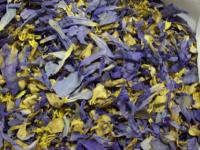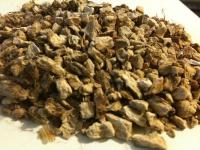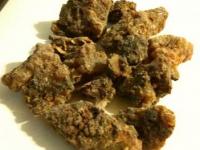Nymphaea Caerulea Incense
Its original habitat may have been along the Nile and other locations in East Africa. It spread to other locations, however, already in ancient times, like the Indian Subcontinent and Thailand. It has historically been known as the blue lotus and sacred lotus, particularly in discussing its revered status among the Ancient Egyptians, Nubians, Abyssinians, and any number of historic African civilizations of the ancient world.[citation needed] Since the Indian sacred lotus, Nelumbo nucifera is sometimes called "blue lotus" in a poetical way, both plants could be confused.
The leaves are broadly rounded, 25–40 cm across, with a notch at the leaf stem. The flowers are 10–15 cm diameter. Reports in the literature by persons unfamiliar with its actual growth and blooming cycle have suggested that the flowers open in the morning, rising to the surface of the water, then close and sink at dusk.[citation needed] In fact, the flower buds rise to the surface over a period of two to three days, and when ready, open at approximately 9-9:30am and close about 3pm. The flowers and buds do not rise above the water in the morning, nor do they submerge at night. The flowers have pale bluish-white to sky-blue or mauve petals, smoothly changing to a pale yellow in the centre of the flower. It was considered extremely significant in Egyptian mythology, since it was said to rise and fall with the sun. Consequently, due to its colourings, it was identified, in some beliefs, as having been the original container, in a similar manner to an egg, of Atum, and in similar beliefs Ra, both solar deities. As such, its properties form the origin of the lotus variant of the Ogdoad cosmogeny. It was the symbol of the Egyptian deity Nefertem.
- Brand WSF

Item is shipped out within 3 business days.
Exchanges are accepted but not returns.


































